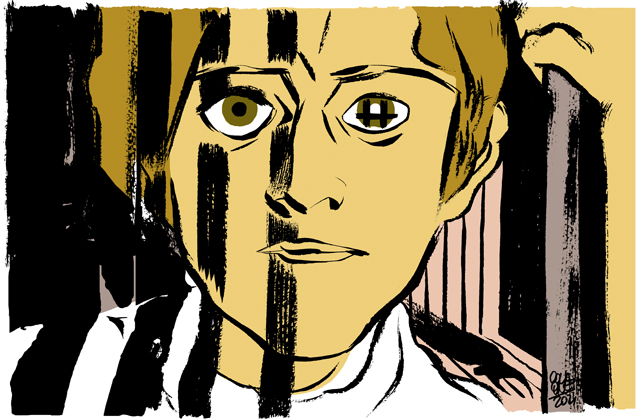The Function of the Interstices between Public and Private Spaces
Abstract
In this essay, interstices will undergo a theoretical analysis as space-time elements between two distinct worlds. The first world is that of work declined on various types of activities. It can be a factory for workers, an office for white-collars, a university for students, but it also contemplates the places of cure and detention: hospitals, prisons, and all the Foucaultian heterotopias that host various types of people with different levels of control. The second world corresponds to the house we live in: it is the world of private affections, of intimacy. Conversely, examples of interstices are public spaces and establishments such as cinemas, theatres, museums, bars, shops, supermarkets, hairdressers, newsstands, streets and squares, sidewalks, urban parks, railway and underground stations, empty spaces. The interstices can correspond to places of transit or consumption, they can constitute confidential places, but also places of improvisation linked to adventures, or they can represent privileged contexts of resistance to the globalization processes. Today as yesterday, it is above all the flâneur who is allowed to explore them and reflect on interstices, interpreting and narrating them. The interstice, however, is not just a rediscovery of the walking city. The interstice is also an excavation in the most disparate private places, even those of detention, where we can hide our secrets. In the end, interstices are a search for ourselves, therefore becoming a fundamental perspective for confirming or rebuilding our identity.
Downloads
References
Amendola, Giandomenico, La città vetrina. I luoghi del commercio e le nuove forme del consumo, Napoli, Liguori, 2006.
Augé, Marc, Rovine e macerie. Il senso del tempo, Torino, Bollati Boringhieri, 2004.
Benjamin, Walter, I “passages” di Parigi (1927-1940), Torino, Einaudi, 2002.
Id., “Tesi di filosofia della storia” (1940), Angelus Novus, Torino, Einaudi, 1995: 75-86.
Bodei, Remo, La vita delle cose, Roma-Bari, Laterza, 2009.
Bourdieu, Pierre, “Structures, habitus, pratiques”, Le sens pratique, Paris, Éditions de Minuit, 1980: 87-109.
Castiglioni, Ida, Giasanti, Alberto, Natali, Lorenzo (a cura di), Il carcere in città. La voce, il gesto, il tratto e la parola, ovvero l’arte come evasione comune, Milano, Franco Angeli, 2019.
Chombart de Lauwe, Paul-Henry, Paris et l’agglomération parisienne, Paris, PUF, 1952.
Jackson, John, The necessity of ruins, Amherst (MA), University of Massachusetts Press, 1980.
Foucault, Michel, Spazi altri. I luoghi delle eterotopie (1964-1982), Milano, Mimesis, 2000.
Freud, Sigmund, 2014, “Lutto e melanconia” (1915), in Metapsicologia, Torino, Bollati Boringhieri, 2014: 125-143.
Horkheimer, Max ‒ Adorno Theodor, Lezioni di sociologia (1956), Torino, Einaudi, 2001.
Lefebvre, Henri, Critica della vita quotidiana (1958), Bari, Dedalo, 1977.
Nuvolati, Giampaolo, Interstizi della città. Rifugi del vivere quotidiano, Bergamo, Moretti e Vitali, 2019.
Id., Un caffè tra amici, un whiskey con lo sconosciuto. La funzione dei bar nella metropoli contemporanea, Bergamo, Moretti e Vitali, 2016.
Id., L’interpretazione dei luoghi. Flânerie come esperienza di vita, Firenze, Firenze University Press, 2013.
Id., Lo sguardo vagabondo. Il flâneur e la città da Baudelaire ai postmoderni, Bologna, il Mulino, 2006.
Oldenburg, Ray, Celebrating the Third Place. Inspiring Stories About the Great Good Places at the Heart of Our Communities, Boston (MA), Da Capo Press, 2001.
Id., The Great Good Place: Cafes, Coffee Shops, Community Centers, Beauty Parlors, General Stores, Bars, Hangouts and How They Get You Through the Day, New York, Paragon House, 1989.
Perec, Georges, Specie di spazi (1974), Torino, Bollati Boringhieri, 1989.
Peregalli, Roberto, I luoghi e la polvere. Sulla bellezza dell’imperfezione, Milano, Bompiani, 2010.
Perrot, Michelle, Storia delle camere, Palermo, Sellerio, 2011.
Sartoretti, Irene, Intimi universi. Un viaggio attraverso spazi, arredi e vissuti domestici, Milano, Mimesis, 2016.
Sen, Amartya, “Capabilities and Well-Being”, The Quality of Life, Eds. Marta Nussbaum ‒ Amartya Sen, Oxford, Clarendon Press, 1993: 30-53.
Sennett, Richard, Il declino dell’uomo pubblico (1977), Bologna, il Mulino, 2006.
Simmel, Georg, “La metropoli e la vita dello spirito” (1903), Immagini dell’uomo, Ed. Charles Wright Mills, Milano, Edizioni di Comunità, 1982: 525-40.
Tönnies, Ferdinand, Comunità e società (1887), Roma-Bari, Laterza, 2011.
Copyright Notice
You are free to copy, distribute and transmit the work, and to adapt the work. You must attribute the work in the manner specified by the author or licensor (but not in any way that suggests that they endorse you or your use of the work).









